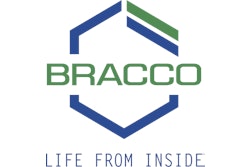The American College of Radiology (ACR) of Reston, VA, is advising radiologists to avoid using the Magnevist, Omniscan, or Optimark contrast agents with patients at high risk for developing nephrogenic systemic fibrosis (NSF).
These and other recommendations for high-risk patients were included in a chapter on NSF added June 10 as part of the version 7 revision of the ACR's Manual on Contrast Media.
The document serves as an authoritative guide, based on the current knowledge of NSF and its association with gadolinium-based contrast media, said Emanuel Kanal, MD, chair of the ACR MRI safety committee. It was written jointly by the safety committee and the ACR's drug and contrast media committee, chaired by Richard Cohan, MD, a professor of abdominal radiology at the University of Michigan. The same document will serve as a revision to the safety committee 2007 NSF guidelines.
"This is the ACR speaking in a single voice," Kanal said in an interview.
The manual sorts gadolinium-based contrast agents into three groups by their association with single-agent, nonconfounded incidents of NSF and overall utilization volume, according to safety subcommittee member Jeffrey Weinreb, MD.
Group I consists of GE Healthcare's Omniscan (gadodiamide), which was linked with 382 cases of NSF after 13 million doses of the agent. Also included were Bayer HealthCare Pharmaceuticals' Magnevist (gadopentetate dimeglumine), which was associated with 195 cases after 23 million doses, and Covidien's Optimark (gadoversetamide), which was linked to 35 cases from 4.7 million doses.
"While various factors may have influenced the number of cases reported with each of these agents, investigators believe that intrinsic properties of these three agents increase the relative likelihood of NSF developing following exposure in at-risk patients," according to the manual.
Bracco Diagnostics' MultiHance (gadobenate dimeglumine) and ProHance (gadoteridol) agents were included in Group II, a category described as associated with few, if any, unconfounded cases of NSF. Also included were Guerbet's Dotarem (gadoteric acid) and Bayer's Gadovist (gadobutrol), although these two have not yet achieved U.S. Food and Drug Administration (FDA) clearance.
Group III contains Lantheus Medical Imaging's Ablavar (gadofosveset) and Bayer's Eovist (gadoxetic acid) agents. Although these are relatively new and have limited data, few, if any, unconfounded NSF cases have been reported from their use, according to the manual.
The incident rates and other data used to create the three groups were drawn from a comprehensive NSF registry maintained by Shawn Cowper, MD, an associate professor of dermatology at Yale University; the FDA's MedWatch (an adverse event reporting system); and other sources. The new recommendations bring the ACR more in line with the European advisories on NSF, Weinreb said.
Imaging high-risk patients
Besides not advising the use of Group I agents for imaging high-risk patients, the ACR recommends considering alternative studies that do not require gadolinium-based contrast media and informing such patients about the potential risks of gadolinium-based contrast-media-enhanced MRI studies.
It also suggests using the lowest possible dose of gadolinium-based contrast media required to obtain the needed clinical information and avoiding double- or triple-dose studies. In addition, the ACR recommends that the referring physician and patient be informed of the risks of gadolinium-based contrast media administration and that both the patient and referring physician agree with the decision to proceed, after demonstrating an understanding of the potential risks of the procedure and possible alternate imaging/diagnostic options.
"It must be remembered that the risks of administering [gadolinium-based contrast media] to a given high-risk patient must always be balanced against the often substantial risks of not performing a needed contrast-enhanced imaging procedure," according to the manual.
Among specific recommendations, the ACR is advising against the use of the Group I agents in patients with end-stage renal disease on chronic dialysis. The society also says these agents should be avoided in patients with acute kidney injury.
Most of the MRI safety committee's 2007 recommendations remain intact, according to Kanal, though advice has been added from growing knowledge in the past three years about the following aspects of the disease and its connection with gadolinium contrast use:
- Impact of cumulative lifetime dose
- Relationship between dose size and disease severity
- Relative risks for pregnant women, children, and other patient populations
"We literally had four times the number of years of experience when this new version came out," Kanal said.
He credits the safety committee's 2007 recommendations for leading MRI users to screen patients for the presence of renal disease, to withhold gadolinium contrast or reduce dosage for at-risk patients, and to use highly stable contrast agents for the at-risk population.
"The adoption of these policies has led to virtually the end of new NSF cases in the past two years," he said.
The ACR continues to recommend an estimated glomerular filtration rate (eGFR) of less than 30 or acute renal failure patients as identifying of higher risk for developing NSF. It also warned MRI users about the dangers of verbal screenings that frequently miss at-risk patients. Patients on dialysis should also receive hemodialysis following gadolinium-enhanced MR.
No new categories of at-risk patients were added, but the manual urged caution when administering gadolinium to pregnant women. Children and adolescents experiencing severe renal dysfunction should be subject to the same prudent practices as adults, though the Schwartz equation, a specific formula for calculating eGFR, should be applied to young patients, Weinreb said.
Vendor reaction
In a written statement, Bayer HealthCare Pharmaceuticals of Wayne, NJ, expressed concern that the ACR recommendations appeared to be based on the interpretation of selected data, rather than a comprehensive evaluation of available information. In particular, Bayer believes the new ACR guidelines do not convey the complexity of information among various gadolinium-based contrast media highlighted during an FDA advisory committee meeting in December 2009.
"In particular, the chapter on NSF does not include key information that we believe provides valuable context for physicians and radiologists to use in assessing risk and making the appropriate choice of contrast agent when contrast-enhanced imaging is required," Bayer spokesperson Marcy Funk told AuntMinnie.com.
Chalfont St. Giles, U.K.-based GE welcomed the updated manual, which spokesperson Sebastien Duchamp characterized in a written statement as accurately reflecting current clinical best practices. He emphasized that clinical and industry efforts since 2006 have led to the virtual elimination of NSF, including no new cases of the disease plausibly associated with Omniscan since September 2007.
In a written statement, Covidien of Dublin, Ireland, noted that its subsidiary, Mallinckrodt, voluntarily added a contraindication for patients with acute or chronic severe renal insufficiency to labeling for Optimark in November 2009. It was added to ensure Optimark is reserved for use in the appropriate patient population representing more than 99% of all patients, according to Covidien spokesperson JoAnna Schooler.
By James Brice
AuntMinnie.com contributing writer
June 17, 2010
Related Reading
GE settles NSF case with Calif. woman, March 25, 2010
MGH study: Adverse reactions to gadolinium contrast are rare, January 22, 2010
Italian researchers cut gadolinium dose -- as well as NSF risk, January 21, 2010
FDA panel: NSF incidence falls with gadolinium restrictions, December 9, 2009
MRI contrast media switch eliminates NSF cases, October 15, 2009
Copyright © 2010 AuntMinnie.com



.fFmgij6Hin.png?auto=compress%2Cformat&fit=crop&h=100&q=70&w=100)




.fFmgij6Hin.png?auto=compress%2Cformat&fit=crop&h=167&q=70&w=250)











